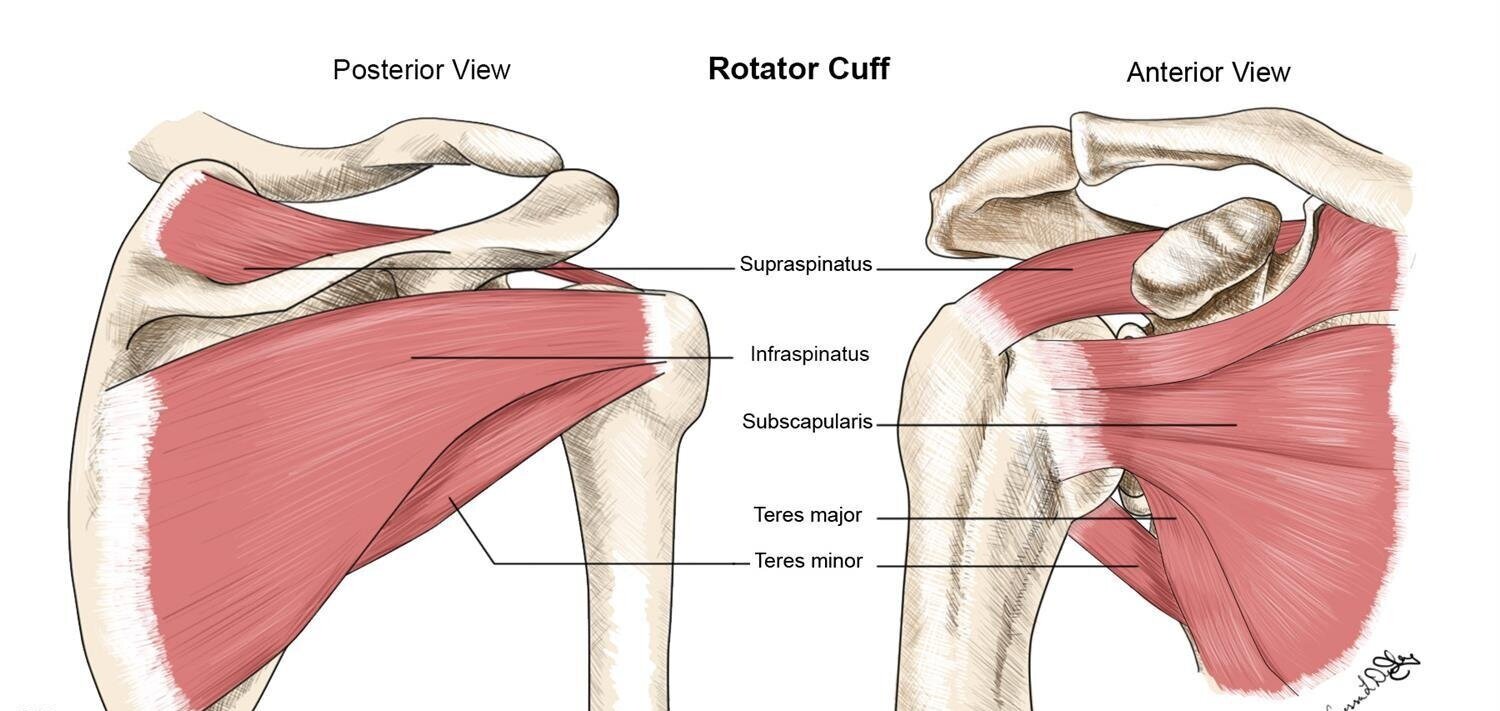Supraspinatus and infraspinatus tears are some of the most common rotator cuff injuries, significantly impacting patients’ shoulder function and overall well-being. Arthroscopic surgeons play a critical role in diagnosing and managing these tears using minimally invasive techniques. This blog post delves into the intricacies of Supraspinatus and Infraspinatus tears, providing a comprehensive guide for arthroscopic surgeons.
Anatomy and Biomechanics:
- Briefly review the anatomy of the rotator cuff, highlighting the role of the supraspinatus (shoulder abduction) and infraspinatus (external rotation) muscles.
- Discuss the biomechanics of the shoulder joint, emphasizing the contribution of the rotator cuff to stability and movement.
Etiology and Risk Factors:
- Discuss the various causes of Supraspinatus and Infraspinatus tears, including:
- Repetitive overhead motions (athletes, manual laborers)
- Age-related wear and tear
- Acute trauma (falls, sports injuries)
- Highlight specific risk factors associated with each tear type:
- Supraspinatus tears: Subacromial impingement syndrome, rotator cuff tendinitis
- Infraspinatus tears: Less common, often associated with larger rotator cuff tears or traumatic injuries
Clinical Presentation and Diagnosis:
- Describe the typical presentation of patients with Supraspinatus and Infraspinatus tears, including:
- Pain in the anterior or posterior shoulder, respectively
- Weakness and difficulty with specific movements (lifting for supraspinatus, external rotation for infraspinatus)
- Night pain
- Clicking or popping sensation
- Emphasize the importance of a detailed history and physical examination to assess range of motion, strength (including specific maneuvers for isolated supraspinatus and infraspinatus function), and joint stability.
- Discuss the role of imaging studies in diagnosis:
- Plain radiographs: Limited role, may reveal bony abnormalities but not tears.
- MRI scans with arthrography: Gold standard for visualizing tear size, location, and retraction pattern.
- Ultrasound: Emerging tool for dynamic evaluation of the rotator cuff, particularly useful in resource-limited settings.
Treatment Strategies:
- Outline the treatment approach for Supraspinatus and Infraspinatus tears, with a focus on arthroscopic management:
- Non-surgical Management: First-line therapy for smaller tears, involving rest, ice, anti-inflammatory medications, and a structured physical therapy program focused on strengthening the rotator cuff, improving shoulder mechanics, and pain reduction.
- Arthroscopic Repair: Preferred approach for most symptomatic tears, offering faster recovery compared to open surgery.
- Surgical Techniques: Discuss various arthroscopic techniques based on tear size, location, and retraction pattern. Highlight advancements like single-row vs. double-row suture techniques with anchors for secure tendon fixation.
- Advanced Considerations:
- Massive Rotator Cuff Tears: Discuss management strategies for these complex tears, including tendon transfers (subscapularis transfer) or grafts (allograft, xenograft) to augment repair.
- Biceps Tenodesis: Address the role of biceps tenodesis in conjunction with rotator cuff repair for biceps pathology contributing to shoulder dysfunction.
Post-Operative Rehabilitation:
- Discuss the importance of a comprehensive post-operative rehabilitation program to optimize functional outcomes.
- Briefly outline the phases of rehabilitation, including:
- Early phase: Pain control, passive range of motion exercises.
- Progressive strengthening exercises for the rotator cuff and other shoulder musculature.
- Functional retraining to restore normal shoulder movement and activities.
Complications and Management:
- Briefly discuss potential complications associated with rotator cuff repair and their management strategies, such as:
- Stiffness: Implement aggressive physical therapy protocols to maintain joint mobility.
- Re-tears: May require revision surgery depending on the severity of the re-tear.
- Infection: Prompt antibiotic therapy and potential surgical intervention.
The EAAA: A Hub for Arthroscopic Expertise
The East African Arthroscopy Association (EAAA) remains committed to advancing the field of arthroscopy. The EAAA provides a platform for arthroscopic surgeons to share knowledge, participate in educational workshops, and stay updated on the latest advancements in rotator cuff repair techniques.

